本期要闻 Highlights of the Month
State of Council: the Action Plan for Carbon Dioxide Peaking Before 2030
为贯彻落实《中共中央 国务院关于完整准确全面贯彻新发展理念做好碳达峰碳中和工作的意见》要求,国务院近日印发了《2030年前碳达峰行动方案》。
意见是党中央对碳达峰碳中和工作的系统谋划和总体部署,覆盖碳达峰、碳中和两个阶段。方案是碳达峰阶段的总体部署,在目标、原则、方向等方面与意见保持有机衔接的同时,更加聚焦2030年前碳达峰目标,相关指标和任务更加细化、实化、具体化。《方案》里面列出了“碳达峰十大行动”,这十大行动是方案最核心的部分。
1.能源绿色低碳转型行动
2.节能降碳增效行动
3.工业领域碳达峰行动
4.城乡建设碳达峰行动
5.交通运输绿色低碳行动
6.循环经济助力降碳行动
7.绿色低碳科技创新行动
8.碳汇能力巩固提升行动
9.绿色低碳全民行动
10.各地区梯次有序碳达峰行动等
从顺序来看,实现碳达峰最重要的依次为能源低碳化、节能和产业结构调整。
政策保障方面,方案提出建立统一规范的碳排放统计核算体系;构建有利于绿色低碳发展的税收政策体系,完善绿色电价政策;建设全国用能权交易市场等。
In order to implement the requirements of the “Opinion of Central Committee of the Communist Party of China and the State Council on implementation of the New Development Philosophy in carbon Peaking and Carbon Neutrality”, the State Council recently issued the “the Action Plan for Carbon Dioxide Peaking Before 2030.”
The Opinion is a systematic and overall planning of Carbon Dioxide Peaking and Carbon Neutrality, covering two stages of Carbon Dioxide Peaking and Carbon Neutrality. While the Action Plan is the overall deployment of the Carbon Peaking phase. It aligns with the Opinion in terms of objectives, principles and directions, but focuses more on the Carbon Peaking target by 2030, with more detailed and practicable indicators and tasks. The Action Plan lists the “Top Ten Actions to Achieve Carbon Peaking”, which is the core part of the Program.
1.Energy Green and Low-Carbon Transition Action
2.Energy-Saving, Carbon Reduction and Efficiency-increasing Action
3.Industrial Carbon Peaking Action
4.Urban and Rural Construction Carbon Peaking Action
5.Green and Low-Carbon Transportation Action
6.Circular Economy to Boost Carbon Reduction Action
7.Green and Low-Carbon Technology Innovation Action
8.Carbon Sink Capacity Consolidation and Enhancement Action
9.Green and Low-Carbon Action for All
10.Orderly Carbon Peaking Action in Each Region
Ten actions are ranked per their contribution to achieving carbon peaking, i.e. the most important actions are energy low-carbonization, energy conservation, and industrial structure adjustment sequentially.
In terms of safeguard measures, the plan proposes to establish a unified and standardized carbon emission accounting system, build a tax policy system in favor of green and low-carbon development, improve the green electricity pricing policy and build a national energy quota trading market.
最新国家法律法规 New Regulations
生态环境部:关于在产业园区规划环评中开展碳排放评价试点的通知
Ministry of Ecology and Environment: Notice on Carrying out Pilot Carbon Emission Assessment in the Planning Environmental Impact Assessment (EIA) of Industrial Parks
为贯彻落实《环境影响评价与排污许可领域协同推进碳减排工作方案》要求,探索在产业园区规划环评中开展碳排放评价的技术方法和工作路径,生态环境部选取具备条件的产业园区,在规划环评中开展碳排放评价试点工作。试点产业园区名单(第一批)包括江宁经济技术开发区、常熟经济技术开发区、宁波石化经济技术开发区等7个国家级和省级产业园区,分别位于江苏、浙江、重庆、山西和陕西省。
通知要求整体试点工作在2022年11月底前完成。
To implement the requirements of the “Work Plan for Collaborative Promotion of Carbon Emission Reduction in the Field of Environmental Impact Assessment and Pollutant Discharge Permit”, and explore the technical methods and work process to incorporate carbon emission assessment in the planning EIA of industrial parks, MEE selects a few industrial parks to pilot the carbon emission assessment in planning EIA process. The list of pilot industrial parks (the first batch) includes 7 national and provincial industrial parks including Jiangning Economic and Technological Development Zone, Changshu Economic and Technological Development Zone, Ningbo Petrochemical Economic and Technological Development Zone, located in Jiangsu, Zhejiang, Chongqing, Shanxi and Shaanxi Province respectively.
The Notice requires that the pilot projects should be completed by the end of November 2022.
生态环境部:关于印发《2021-2022年秋冬季大气污染综合治理攻坚方案》的通知
Ministry of Ecology and Environment: Comprehensive Program to Combat Air Pollution in the Autumn and Winter of 2021-2022
自2017年起,生态环境部连续4年开展秋冬季大气污染综合治理攻坚行动,覆盖范围在京津冀及周边地区“2+26”城市、汾渭平原城市以及长三角地区。今年是第5年实施秋冬季大气污染攻坚行动。今年的覆盖范围在京津冀及周边地区“2+26”城市、汾渭平原城市基础上,增加河北北部、山西北部、山东东部和南部、河南南部部分城市,但是排除了长三角地区。
《方案》的主要目标是,秋冬季期间(2021年10月1日至2022年3月31日),各城市完成PM2.5浓度控制目标和重度及以上污染天数控制目标(附件1),根据测算,攻坚区域内相关城市2021-2022年秋冬季PM2.5平均浓度同比下降4.0%,重污染天数平均每个城市减少2.0天。
《方案》提出15项具体措施,主要思路是落实减污降碳总要求,以减少重污染天气和降低PM2.5浓度为主要目标,抓住产业、能源、运输结构调整三个关键环节,坚决遏制“两高”项目盲目发展。
Since 2017, MEE has been launched combating programs to tackle air pollution in autumn and winter for four consecutive years, covering “2+26” cities in Beijing-Tianjin-Hebei and surrounding areas, cities in the Fenwei Plain and the Yangtze River Delta. This is the fifth year that the air pollution combating Action Plan in autumn and winter has been implemented, which covers all the “2+26” cities in the Beijing-Tianjin-Hebei region and surrounding areas, and cities in the Fenwei Plain, with the addition of some cities in northern Hebei Province, northwestern Shanxi Province, eastern and southern Shandong Province, and southern Henan Province, but excludes the Yangtze River Delta region this year.
The main goal of the Plan is for each city is to reach the control target of PM2.5 concentration and heavy or above heavy polluted days (Annex 1) during the autumn and winter period (October 1, 2021 to March 31, 2022). On average, PM2.5 concentration in relevant cities in the tackling area will decrease by 4.0% year-on-year in autumn and winter from 2021 to 2022, and the number of days of heavy pollution will decrease by 2.0 days for each city.
The plan proposes 15 specific measures, whose main idea is to implement the general requirements for reducing pollution and carbon emission. The plan sets the main goals of reducing heavy polluted weather and PM2.5 concentration, focuses on the three key areas in industry, energy and transportation structure adjustment, and resolutely curbs the blind development of projects with high energy consumption and high emission.
立法草案 Policy Initiatives & Developments
生态环境部:重点排污和环境风险管控单位名录管理规定(征求意见稿)
Ministry of Ecology and Environment: Provisions on the Management of Lists of Key Pollution Discharge and Environmental Risk Control Units (Draft for Consultation)
在原《重点排污单位名录管理规定(试行)》基础上修订。
新规定将管理对象划分为重点排污和环境风险管控两大类,其中重点排污单位包括大气、水重点排污单位,环境风险管控单位包括大气、水、土壤和其他四类。规定明确了重点排污单位筛选的污染物种类,实行差别化的筛选条件,针对性解决法律法规中对重点排污单位和重点环境风险管控单位的不同筛选和监管要求。
The Provisions is revised on the basis of the original provisions on the administration of the list of key pollutant discharge units.
The new Provisions divides the management objects into two major categories: key pollution discharge and environmental risk control. The key pollution discharge units include air and water key pollution discharge units, and the environmental risk control units include Air, Water, Soil and Others four categories. The Provisions clarifies the types of pollutants screened by key pollutants, implements differentiated screening conditions, and specifically addresses the different screening and supervision requirements for key pollutants and key environmental risk control units in laws and regulations.
生态环境部:关于开展工业固体废物排污许可管理工作的通知(征求意见稿)
Ministry of Ecology and Environment: Notice on Carrying out the Management of Industrial Solid Waste Discharge Permits (Draft for Consultation)
新修订的《固废法》明确提出“产生工业固体废物的单位应当取得排污许可证”要求。为落实法律要求,通知制定了工业固体废物纳入排污许可证相关管理要求、实施步骤、关注重点。
为了统一规范工业固废纳入排污许可证的技术要求,环保部制定了固废技术规范,替代已发布的含有工业固废要求的45 个技术规范(见附表 1)中相关内容。
按照平稳延续原则,对通知发布前已经取得排污许可证单位,不强制要求其在排污许可证有效期内申请变更以增加工业固废内容,而是通过排污许可证到期延续或由于其他原因申请变更时一并将工业固废内容纳入方式。
The newly revised “Law of the People’s Republic of China on the Prevention and Control of Solid Waste Pollution” clearly puts forward the requirement that “units producing industrial solid waste shall obtain a pollutant discharge permit.” In order to implement the legal requirements, the notice formulates the relevant management requirements, implementation procedures, as well as the focus of industrial solid waste incorporated in the pollutant discharge permit.
In order to unify the technical requirements for the incorporation of industrial solid waste in the pollutant discharge permit, the Ministry of Ecology and Environment has formulated the Technical Specification for Solid Waste to replace the relevant content in the 45 issued technical specifications (see Appendix 1) that contain industrial solid waste requirements.
According to the principle of smooth continuation, the units that have obtained the pollutant discharge permit before the notice is issued are not required to apply for change within the validity period of the PDP to increase the content of industrial solid waste, but to incorporate the content of industrial solid waste when applying for the continuation of period when the PDP expires or when applying for changes for other reasons.
Ministry of Ecology and Environment: Action Plan for New Pollutant Governance (Draft for Consultation)
新污染物一般是指新近发现或被关注,对生态环境或人体健康存在风险,尚未纳入管理或者现有管理措施不足以有效防控其风险的污染物。为明确“十四五”时期及今后一个时期新污染物治理工作目标和具体任务措施,编制本方案。
针对新污染物,方案提出的行动举措包括建立健全化学物质环境风险管理法规制度体系,完善环境风险评估与管控制度;开展新污染物环境调查监测和环境风险评估,识别重点管控的新污染物,动态发布重点管控新污染物清单;实施新污染物全生命周期环境风险管控,包括严格涉新污染物产品源头管控、加强生产和使用过程控制、强化大气、水、土壤等多环境介质新污染物协同治理等措施。
方案以附件形式发布了第一版《重点管控新污染物清单(2021 年版)》,首批收录了抗生素、PFOS、PFOA、甲醛和乙醛等三类28种物质。
New pollutants generally refer to newly discovered or concerned pollutants that have risks to the ecological environment or human health, which have not been incorporated into the management objectives, or that the existing management measures are not sufficient to effectively prevent and control their risks. This plan is prepared to clarify the objectives, specific tasks and measures for the treatment of new pollutants during and after the 14th Five-Year Plan period.
For new pollutants, the measures proposed in the plan include:
· Establish and improve the legislation system for chemical environmental risk management, and improve the environmental risk assessment and control system;
· Carry out environmental investigation and monitoring of new pollutants and environmental risk assessment, identify new pollutants subject to key control, and dynamically update the new pollutants subject to key control;
· Implement the full life cycle environmental risk management and control of new pollutants, including strictly control the source of products involving new pollutants, strengthen the control of production and utilization process, and strengthen the collaborative treatment of new pollutants in multiple environmental media such as atmosphere, water and soil.
The first version of the list of new pollutants subject to key control (2021 version) was released as an Annex. The first batch included 28 substances in three categories: antibiotics, PFOS, PFOA, formaldehyde and acetaldehyde.
生态环境部:关于开展特殊时段排污许可管理试点的通知(征求意见稿)
Ministry of Ecology and Environment: Notice on Launching the Pilot Management Program of Pollutant Discharge Permits during Special Periods (Draft for Consultation)
通知围绕重污染天气预警期间及国家规定的禁止或者限制污染物排放及相关环境管理要求等,试点将特殊时段减排措施明确载入排污许可证,落实污染物排放要求,建立特殊时段环境管理台账和执行报告制度,加强特殊时段排污许可证后监管。
The Notice puts emphasis on the early warning period of heavily polluted weather, the prohibition or restriction of pollutant discharge and related environmental management requirements stipulated by the state. The pilot program clearly incorporates emission reduction measures for special periods in the pollutant discharge permit, implements pollutant discharge requirements, establishes an environmental management accounting platform and a reporting system for special periods, and strengthens the supervision of PDP during special periods.
生态环境部:“十四五”环境影响评价与排污许可改革实施方案(征求意见稿)Ministry of Ecology and Environment: Implementation Plan for Environmental Impact Assessment and Pollutant Discharge Permit Reform in the 14th Five-Year Plan (Draft for Consultation)
“十三五”期间,环评与排污许可全面推进“放管服”改革,严格生态环境准入,强化事中事后监管;“十四五”环评和排污许可工作将落实“十四五”生态环境保护规划设定的任务目标,推进减污降碳协同增效,应用完善以“三线一单”为核心的生态环境分区管控体系,持续提升重点领域重点行业环评管理效能。
During the “13th Five-Year Plan” period, EIA and pollutant discharge permit (PDP) systems promoted the reform of “Simplification and Decentralization”, strictly enforced ecological access control, and strengthened during and post-event supervision. The “14th Five-Year” EIA and PDP reform Plan will implement the tasks and objectives set by the “14th Five-Year” Ecology and Environment Protection Plan, promote the synergy of pollution reduction and carbon reduction, apply and improve the ecological environment zoning management oriented by “Ecological Protection Red Line, Environmental Quality Bottom Line, Resource Utilization Upper Limit and Ecological Environment Impact Access List”, and continuously improve the efficiency of EIA process in key fields and key industries.
最新地方性法规 Regional Updates
广东省:关于做好建设项目挥发性有机物(VOCs)排放削减替代工作的补充通知
Guangdong Province: Supplementary Notice on the Reduction and Substitution of Volatile Organic Compounds (VOCs) Emissions in Construction Projects.
通知结合《广东省生态环境厅关于做好重点行业建设项目挥发性有机物总量指标管理工作的通知》(粤环发[2019]2号),补充了技改或改扩建项目VOCs排放总量替代有关要求,以及原有项目VOCs排放总量不明确、违法增加生产线或生产工序情况的年排放量认定等要求。
In combination with the “Notice of the Guangdong Provincial Department of Ecology and Environment on Effectively Conducting the Management of Total Volatile Organic Compounds Indicators for Construction Projects in Key Industries”(Yue Huan Fa[2019]2), the Notice supplements the relevant requirements for the replacement of total VOCs emissions in technical transformation or reconstruction and expansion projects, as well as the requirements for the identification of annual emissions due to unclear total VOCs emissions from original projects and illegal increase of production lines or production processes.
Shanghai Municipality: Regulations of Shanghai Municipality on Safe Production (2021 Revision)
本次修订创设了风险防控和社会共治两个章节,加强全过程风险防控,推动并保障社会各方主体共同发挥作用,参与安全治理。
本次修订因应上位《安全生产法》的变化,要求企业按照生产安全事故的发生概率及后果严重程度,开展安全风险分级管控。
本次修订还对危险作业管理、变更管理、外包管理、重大危险源管理等关键环节增设了制度规范;同时,增加多项行政处罚、实行单位个人双罚制、实施信用惩戒、拓展行刑衔接、引入公益诉讼,用法律手段促使责任履行。
The revision creates two chapters on risk prevention and control and social governance to strengthen the whole process of risk prevention and control, and to promote and protect the role of all social actors to participate in safety governance.
The revision responds to the changes in “Work Safety Law”, which requires enterprises to carry out safety risk grading and control according to the probability of production safety accidents and the severity of the consequences.
This revision also adds systems and specifications for key links such as hazardous operation management, change management, outsourcing management and major hazard source management. At the same time, the revision increases a number of administrative penalties, implements credit punishment and the double punishment system for entities and individuals, expands the connection of administrative and criminal procedures, introduces public interest litigation, and promotes the performance of responsibilities by legal means.
浙江省:关于深化长三角生态绿色一体化发展示范区环评制度改革的指导意见(试行)
Zhejiang Province: Guiding Opinions on Deepening the Reform of the Environmental Impact Assessment System in the Yangtze River Delta Ecological and Green Integrated Development Demonstration Area (Trial)
意见在长三角生态绿色一体化发展示范区内实施,包括上海市青浦区、江苏省苏州市吴江区、浙江省嘉兴市嘉善县,两区一县合计2413平方公里辖区面积。
《指导意见》主要包括四大方面14条具体措施。一是强化规划环评与项目环评联动。二是实施项目环评管理“正面清单”制度。三是做好环评制度与相关生态环境制度的统筹衔接。提出了探索“两证联办”模式、协同落实降碳目标、强化“三线一单”应用等3项措施。四是加强事中事后环境监管。
意见将于2021年11月15日实施。
The Opinions will be implemented in the Yangtze River Delta ecological and green integrated development demonstration area, including Qingpu District in Shanghai Municipality, Wujiang District of Suzhou Municipality in Jiangsu Province and Jiashan County of Jiaxing Municipality in Zhejiang Province, , which occupies 2,413 square kilometers of jurisdictional area.
The Guiding Opinions mainly includes 4 aspects and 14 specific measures. First, it strengthens the linkage between planning EIA and project EIA. Second, it implements the “Positive List” system of project EIA management. Third, it effectively conducts the overall transition between the environmental assessment system and relevant ecological environment systems. It proposes 3 measures, including exploring the modes of “joint handling of two certificates”, coordinating the implementation of carbon reduction objectives, and strengthening the application of “Ecological Protection Red Line, Environmental Quality Bottom Line, Resource Utilization Upper Limit and Ecological Environment Impact Access List”. Fourth, it strengthens environmental supervision during and after the construction of the project.
The Opinions will be implemented on November 15, 2021.










 沪公网安备31010602007801
沪公网安备31010602007801